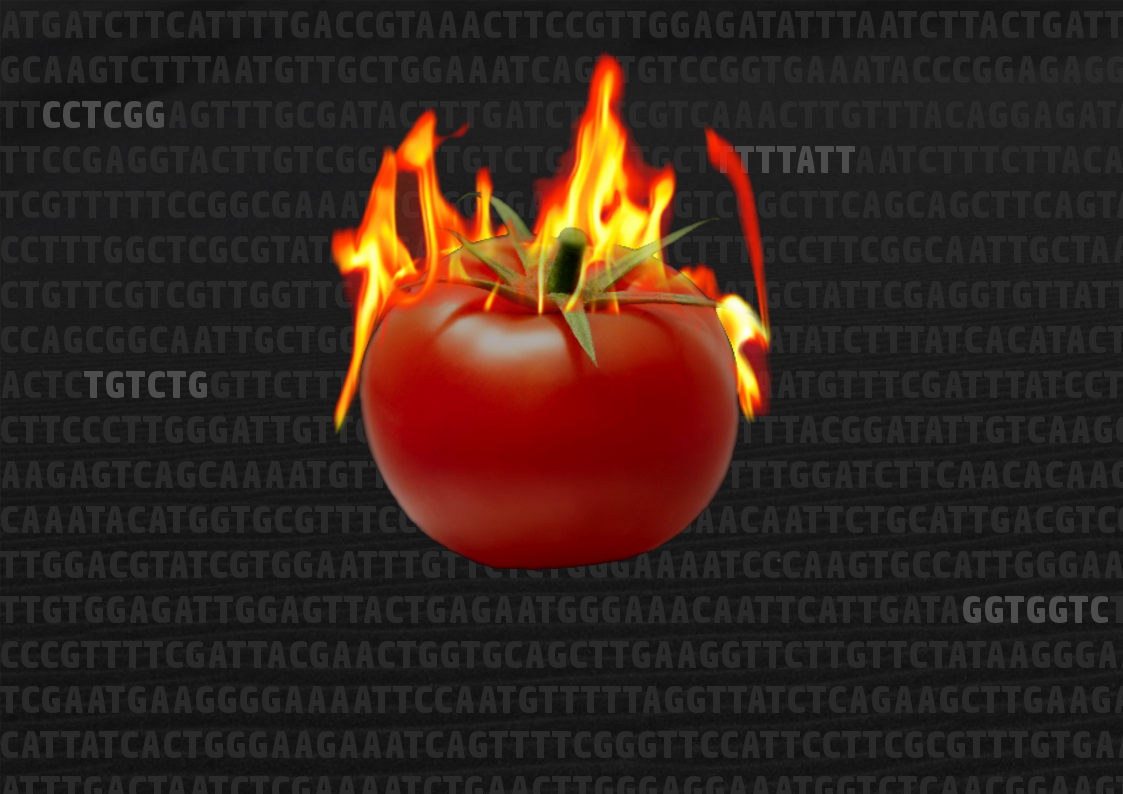Hot Tomato: Complementation of the Capsaicin Biosynthetic Pathway to Engineer Spicy Tomatoes
Greg Reeves (Department of Plant Sciences, University of Cambridge), Chris Boursnell (Department of Plant Sciences, University of Cambridge), Jie Li (John Innes Centre)
Chili pepper (Capsicum spp.) is the most cultivated spice crop in the world with an annual value over $20B (USD). The spicy flavour of chili peppers is due to the accumulation of capsaicinoids and interestingly, the orthologous genes for the whole capsaicin pathway are present in the tomato genome but are not expressed at the same stages in fruit development as in chili pepper. This project aimed to utilise synthetic biology approaches to overexpress enzymes from chili pepper to complement endogenous tomato genes—forming a functioning capsaicin pathway to yield spicy tomatoes. This experiment offers a tool to building synthetic pathways in plants through complementation of existing components and furthers understanding the evolution of secondary metabolites in plants.
The team identified missing genes in tomato for the capsaicin biosynthetic pathway by comparative bioinformatic analyses. They selected and cloned eight genes in the pathway into single and multi-gene transformation constructs which have initially been tested in tobacco (Nicotiana benthamiana) by infiltrating with Agrobacterium tumefaciens to give transient expression. The lines have been screened for capsaicin accumulation via spectroscopy and several lines absorbed the wavelength for capsaicin (280 nm), suggesting capsaicin accumulation, but analysis in on-going. The next stage of the project will be stable tomato transformation with all eight chili pepper genes to produce tomatoes with heritable spiciness.
The work has been presented at the OpenPlant Forum, NIAB and the Cambridge Science Festival as part of a ‘Synthetic Biology and the Senses’ exhibit.


